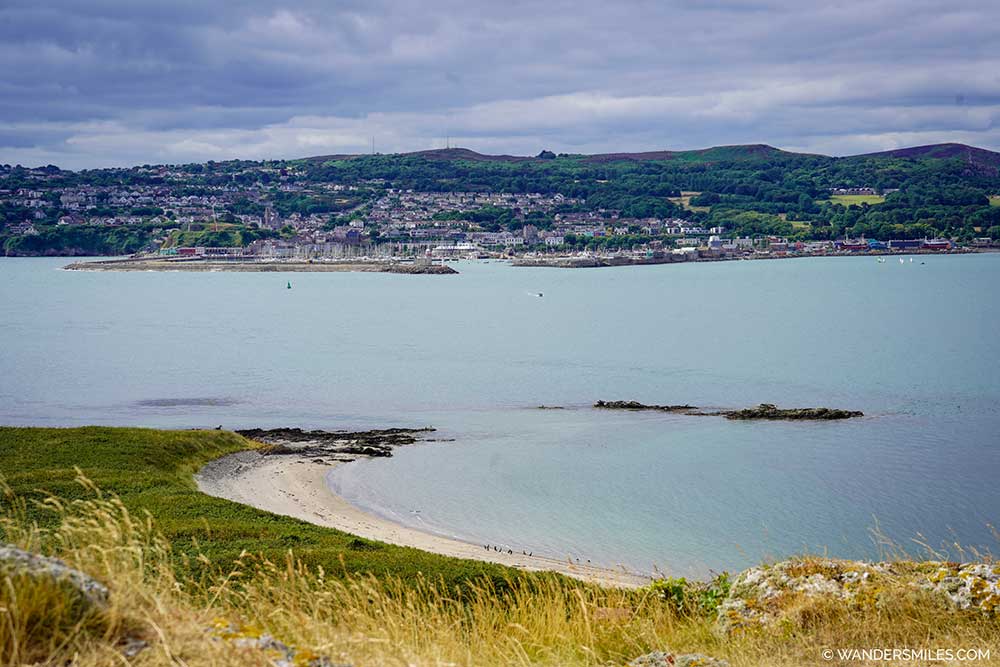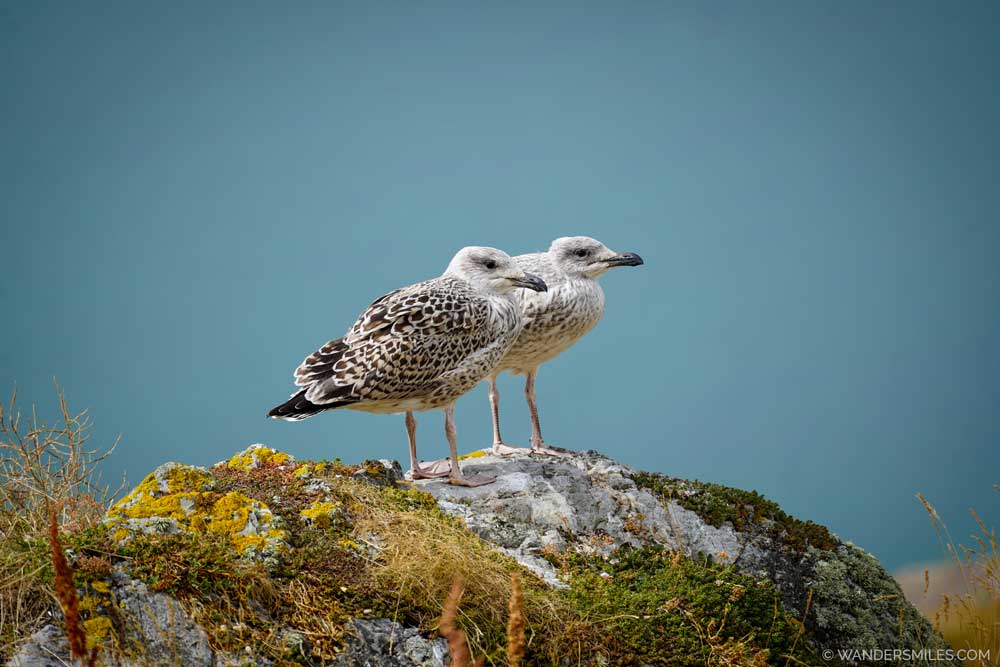A trip to Ireland’s Eye is one of the most interesting things to do in Dublin. It’s a diminutive 54 acres of windswept land, and the highest point can be reached in less than half an hour, but it’s still an excellent excursion.
This cute island is perfect if you love beautiful views, the rugged Irish coastline, and birdlife. To visit Ireland’s Eye, it’s an easy 15 minutes on one of the many ferries that bob across the sea from Howth, and there are lots to do and see once you arrive.
Ireland’s Eye is uninhabited by humans, but there’s plenty of wildlife on these untouched shores, including grey seals and a huge variety of whirling seabirds.
- About Ireland’s Eye
- History of Ireland’s Eye
- Why is it called Ireland’s Eye?
- Is Ireland’s Eye a conservation area?
- Visit Ireland’s Eye | Need to know
- Getting to Ireland’s Eye
- Respect the wildlife on Ireland’s Eye
- Is Ireland’s Eye worth visiting?
- What to do on Ireland’s Eye
- Useful links for your trip to Howth
Disclosure: This post contains affiliate links, which means I may receive a small commission if you click a link and purchase something that I’ve recommended. It comes at no cost to you. Thank you for your support.
About Ireland’s Eye
History of Ireland’s Eye
Ireland’s Eye has been the home of humans for very few of the last 1400 years, and those who did live there were mainly religious figures.
The ruins of the church can still be explored; it was set up by three of the sons of a noble family who ruled Leinster in the 6th-7th century. They were pious men, and there is the suggestion, from the evidence of farming on the island, that they also founded a monastic community.
The Garland of Howth, a manuscript detailing the four gospels, was produced by church scribes between the 8th and 10th centuries. There’s a legend that one of the sons threw the book at the devil lurking on the island, splitting the earth to create Puck Rock.
Ireland’s Eye was a strategic piece of land frequently attacked by raiders from the English and Welsh coast and, later, the Vikings.
In 1804 a Martello Tower was built on the island, making it part of the defensive mechanism that protected the Irish and English coast from Napoleonic invasion.
Violence and profound sadness visited the island’s beach in September 1852 when Sarah Maria Louisa Kirwan was found drowned in the Long Hole. Her husband, a man with a second family, was convicted of her murder, but many still believe it was an accident.
In the 20th and 21st centuries, the island has had various assaults on its fragile ecosystem. The worst was in 1975 when a wildfire burned for two days and destroyed 80% of the surface. As a result, Ireland’s Eye is now a Special Area of Conservation and a Special Protection Area to protect the precious natural environment.
Why is it called Ireland’s Eye?
This beautiful little island’s original name was Eire’s Island (Inis-Eireann), Eire being the Irish language name for Ireland. Later it was Inis-mac-Nessan, after the ordained sons of the Royal Family of Leinster, who founded the church. When the Vikings arrived, they changed it to the Old Norse word for island, ‘ey.’
Is Ireland’s Eye a conservation area?
Ireland’s Eye is an integral part of the Dublin Bay Biosphere and is both a Special Protection Area and a Special Area of Conservation. The island is an unspoiled wilderness home to thousands of seabirds and seals whose habitat needs protection.
Because of Ireland’s Eye’s conservation status, large boats don’t land on the shore, and your tour will be from the sea. These trips are usually called ‘eco-tours.’ Smaller boats have less of an impact on the environment and won’t cause damage, so you will be allowed to get off and explore the island on foot.
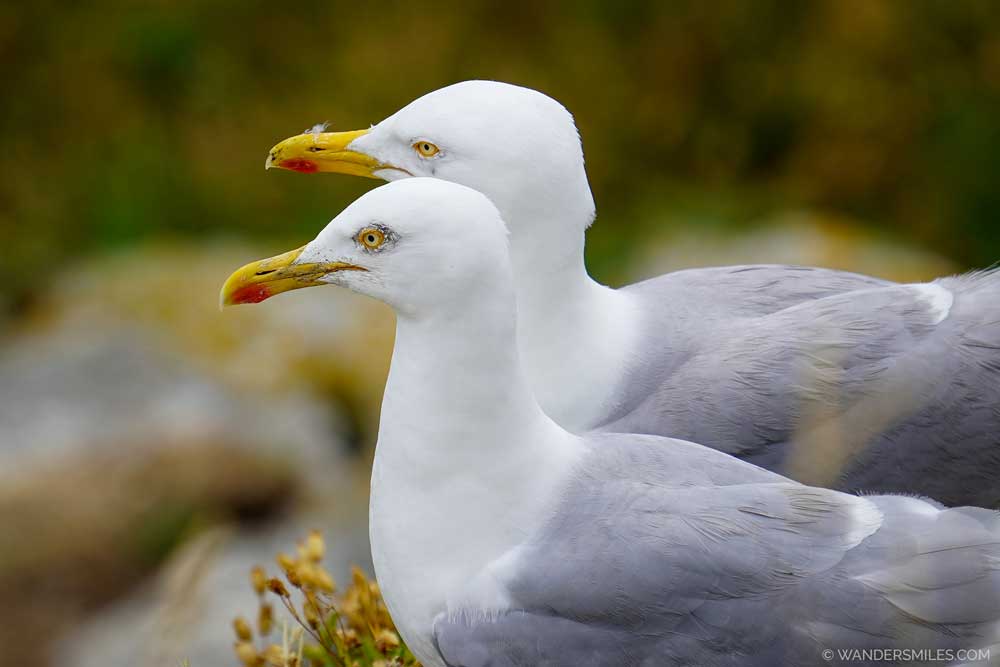
Visit Ireland’s Eye | Need to know
Getting to Ireland’s Eye
There are three ferry companies that go to Ireland’s Eye.
Island Ferries – This is the company I used to visit Ireland’s Eye. They are the only ferry company that lands on the island as they use smaller boats. They operate throughout the year from Howth Harbour; however, in winter, the service only includes weekends, bank holidays, and private charters. Once dropped off, you can stay on the island and explore until the arrival of the last boat, or hop on any before that.
Ireland’s Eye Ferries – Explore Ireland’s Eye from the sea in the company of a friendly, knowledgeable skipper. Meet the seals, dolphins, and occasional whales which swim in these waters and see the mysterious caves, dramatic cliffs and seabird-covered sea stacks along the coastline.
Dublin Bay Cruises – This relaxing cruise takes an hour, so it’s a great option if you’re pushed for time. The skipper of St Bridget knows all the best vantage points to see the bird colonies and coastal caves, and there’s a bar on board if you fancy a beer as you sail.
Respect the wildlife on Ireland’s Eye
If you choose to land on Ireland’s Eye, remember to respect the environment
- Watch where you walk. There are nests with eggs all over, don’t go off-piste.
- Do not approach the birds. Due to the time of year, it will be breeding season so keep your distance. Some of these gulls are pretty big and will protect their nest if you get too close.
- Observe from afar. Be prepared and take a zoom lens.
- Leave no trace. It goes without saying, take any litter home with you.
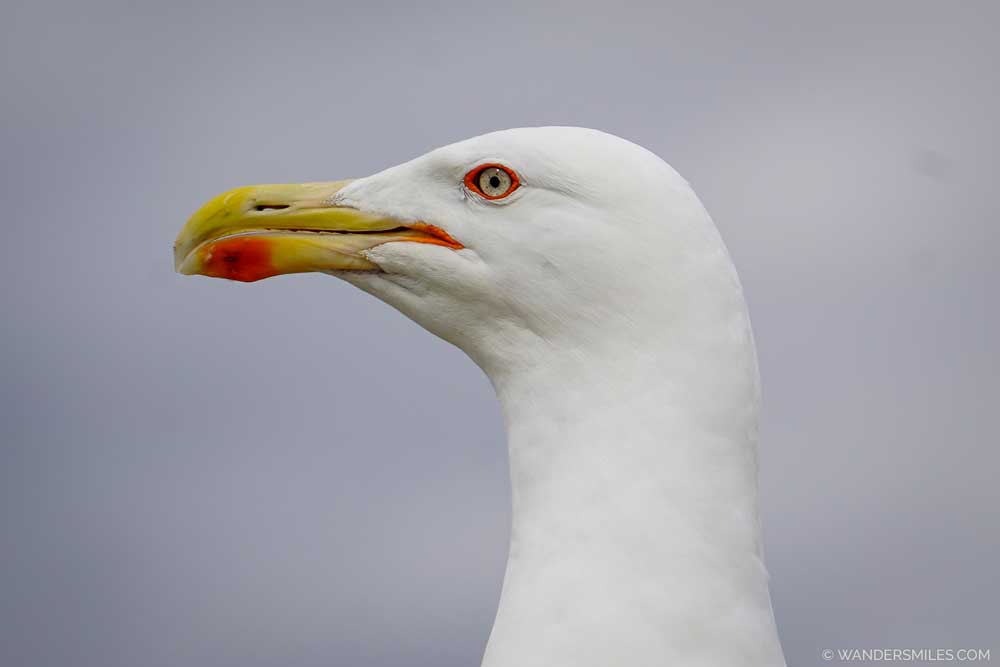
Is Ireland’s Eye worth visiting?
As a wildlife lover, Ireland’s Eye is worth visiting! The sea stacks rise dramatically out of the waves and are populated by all kinds of seabirds from Razor Bills to Guillemots. The cliffs are a chaos of nesting cormorants, and cute grey seals can be seen lounging on the beaches and bobbing about in the water.
Ireland’s Eye is also remarkably unspoiled, especially considering its proximity to the centre of Dublin. Step upon the shore, and you’ll feel a thousand miles away from civilisation. Only the ancient church and Martello Tower reveal the previous presence of human life.
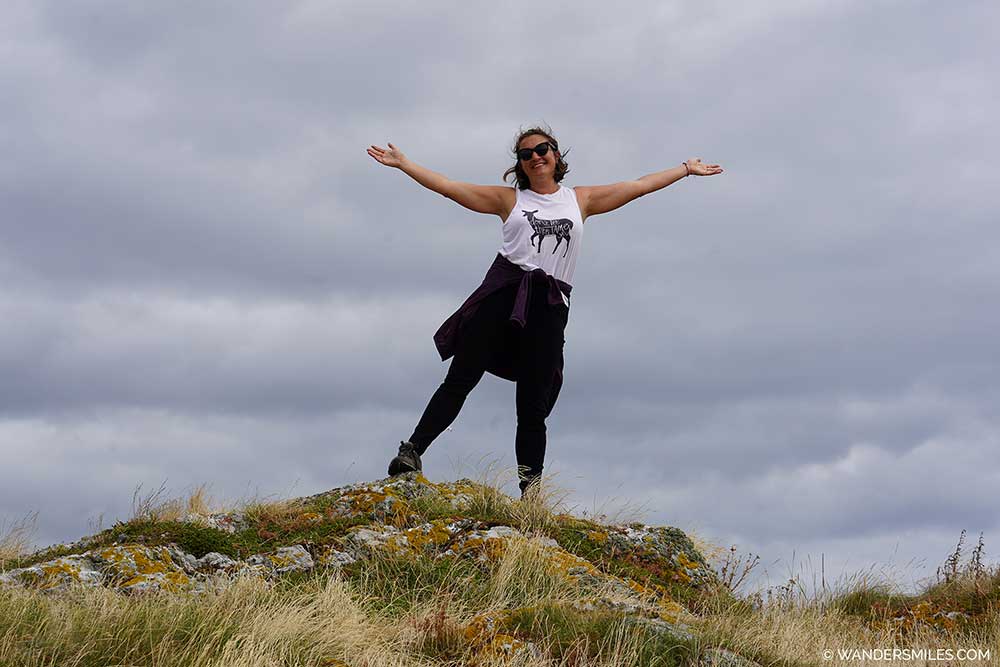
What to do on Ireland’s Eye
The joy of a trip to Ireland’s Eye is soaking up the wild beauty surrounding you from the moment the boat leaves the Howth Harbour. There are plenty of things to do too; from hiking along the coastline and picnicking on the beach to wild swimming and exploring the ancient relics of religion and defence.
Martello tower
This 200-year-old defensive edifice from the Napoleonic War is one of the first things you’ll see as you step off the boat onto Ireland’s Eye. It’s a reminder that the island has always had a strategic position on this crucial part of the Irish coast.
Ruins of The Church of the Sons of Nessan
Pious men from a noble Irish family were some of the first human inhabitants of Ireland’s Eye. As you explore the ancient remain of their 8th-century church, imagine the savage land on which they made their home.
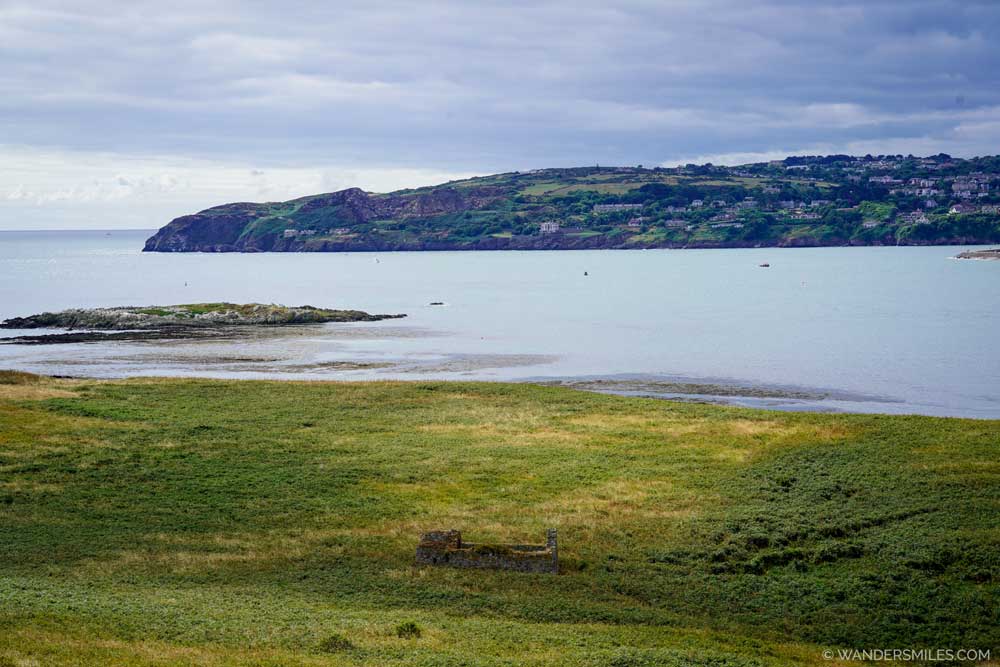
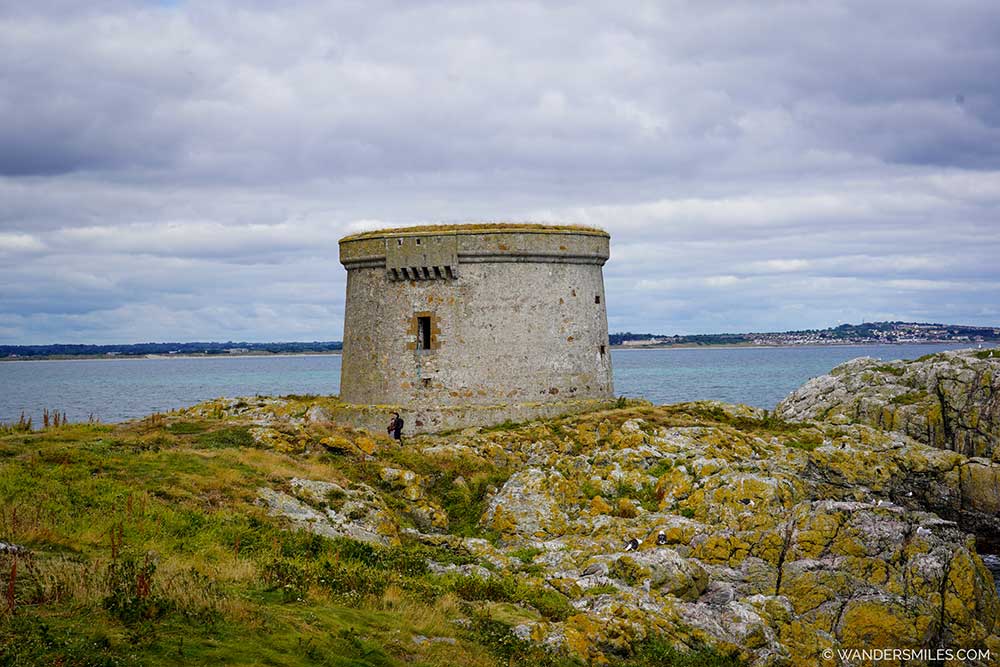
The Stack and colonies of seabirds
The flourishing community of seabirds is one of the main reasons Ireland’s Eye is protected. On the southeast corner of Ireland’s Eye, the breathtaking shards of quartzite craggy rock rise out of the sea, and are aptly named ‘The Stack’.
On the Outer Stack, a dense colony of Gannets lives, and Cormorants, Shags, Kittiwakes, Guillemots, and Great Black-backed and Herring Gulls nest along the cliffs.
If your boat trip is making a landing, ask them to take you past the colonies on the return journey. Unfortunately, it wasn’t possible for me due to the fact that the small boat would not be able to cope with the rougher waters on that side of the island.
FUN FACT: Cormorants dive underwater for their food and then can be seen on a rock spreading their formidable black wings. This helps dry their feathers out as they lack the waterproofing qualities of other water birds.
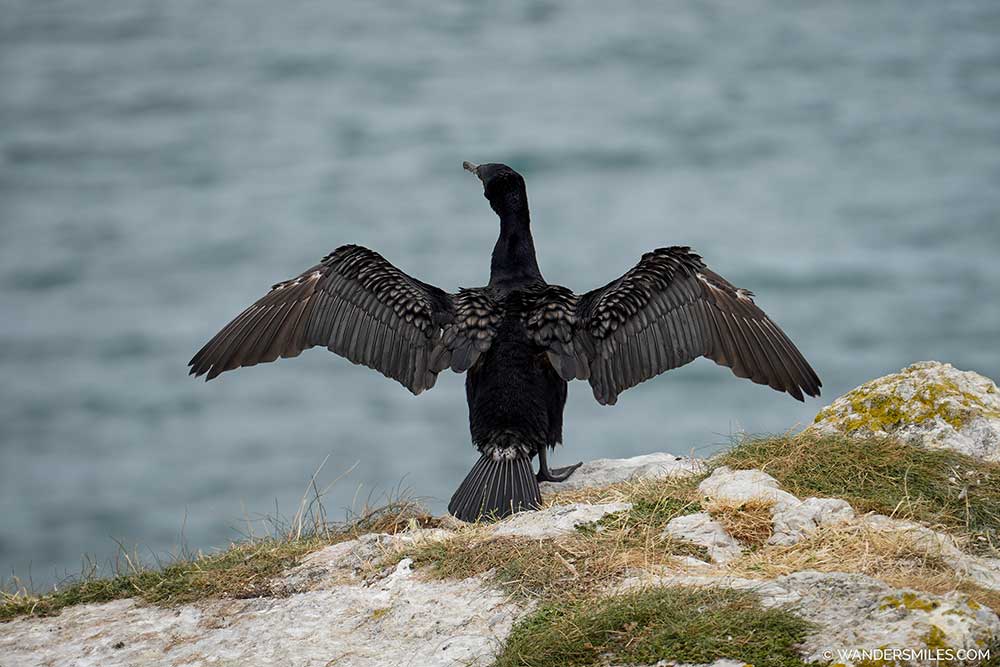
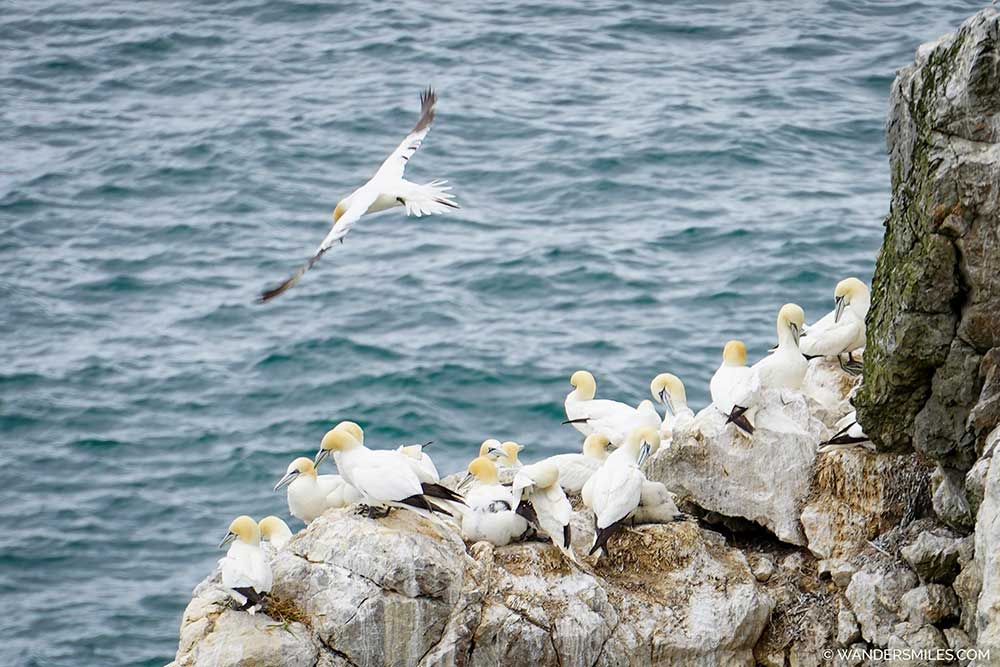
The Beach on Ireland’s Eye
The beach is gorgeous, and it could be the ideal spot for a picnic. However, Ringed Plovers and Oystercatchers are beach-nesters, so I avoided walking down to this area in case my footfall caused damage.
Spot the Grey Seals
seals are curious creatures who will pop up alongside the boat as it motors along the coast of Ireland’s Eye. You also see them sunbathing on the rocks and beaches if you decide to take a hike around the island.
